Speakers:
- Loren Ellison – Key Accounts Manager, LeadSquared
- Jon Lewis – VP – Brand and Strategy, Universal Technical Institute
- Bobby Babbrah – Managing Partner and CEO, Flipp.ed Ventures LLC
- Monica Carson – Chief Growth Officer, American College of Education
Key Takeaways:
- The new generation of students can be effectively engaged by addressing diversity and personalized outreach.
- Diversity significantly affects retention, recruitment, and career prospects.
- Tailoring programs, messaging, nurturing, and engagement efforts around the subgroups allow for better student acquisition.
“Instead of using technology to automate processes, think about using technology to enhance human interaction.” – Tony Zambito.
This very accurate marketing quote could be used to sum up the intention of the roundtable webinar to appeal to the next generation of students.
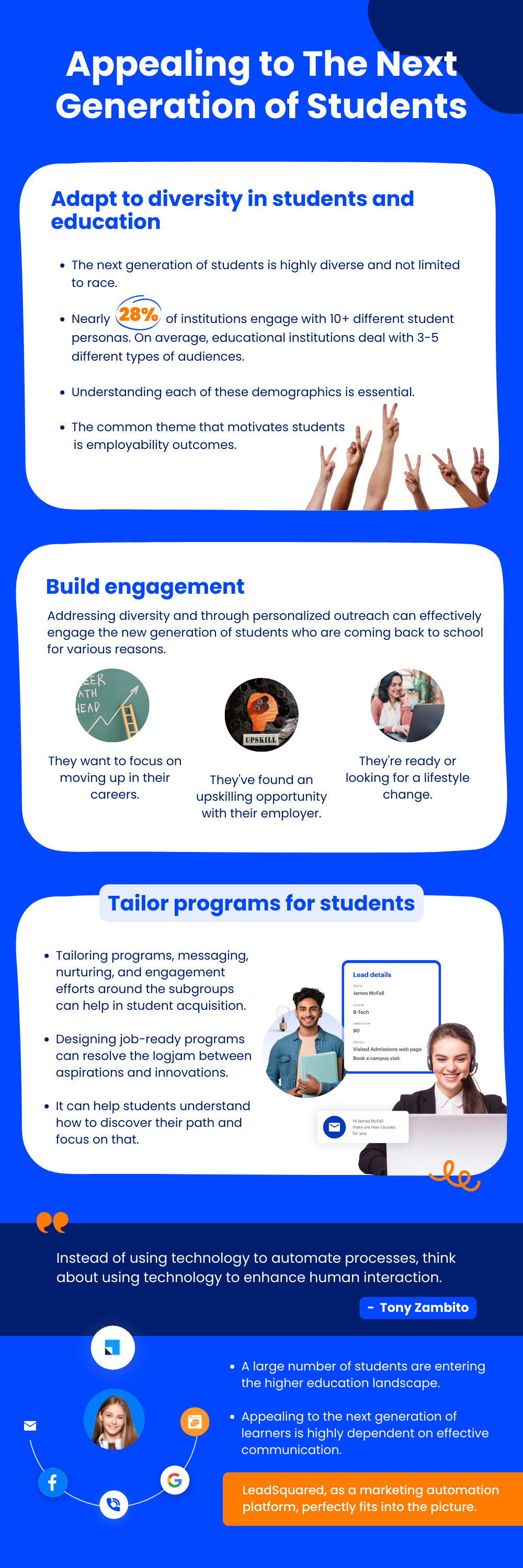
After a round of introductions from all the panelists, the session began with an interesting poll for the audience.
Enrollment Lead Management
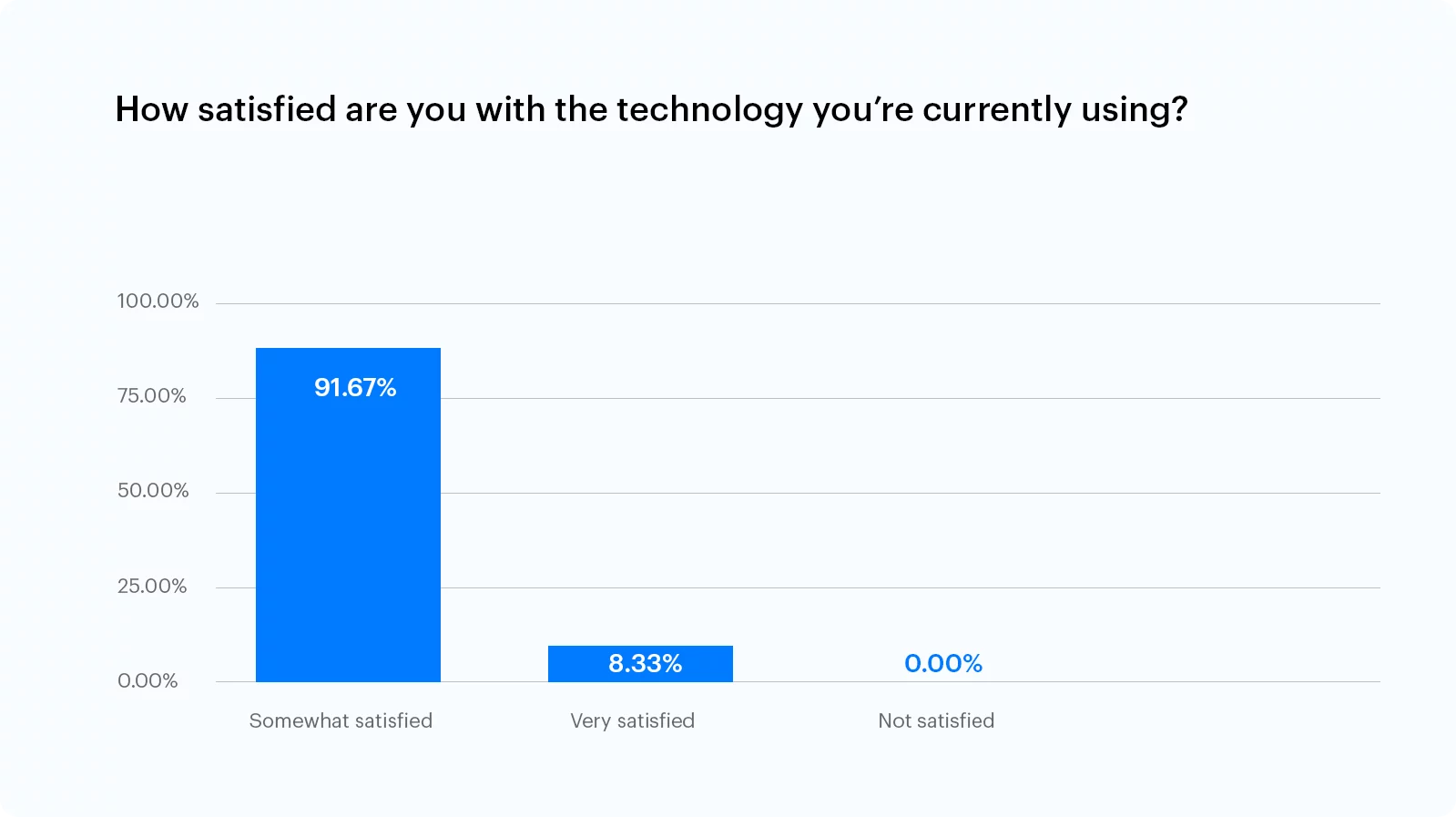
Loren Ellison, Key Accounts Manager of LeadSquared, who initiated the poll, gathered from the poll answers that most people were “somewhat satisfied.”
“The next generation of students is incredibly diverse.”
Explaining the reason behind stating the same, Loren said they could no longer use the “traditional college learner” to build their marketing and targeting strategies.
She immaculately put forth how it is essential to appreciate the wide variety of backgrounds and experiences that students bring to the table and understand the unique expectations of their education.
“In order to appropriately increase enrollments, we have to start appealing to this new majority.”
There is a growing number of non-traditional students entering the higher education landscape.
What has to be really taken into consideration is the exponential diversity on this front.
Diversity in Students and Education
Loren then probed her fellow panelist Bobby to talk about how this diversity impacts the ability to provide a meaningful experience for each student.
Bobby, speaking from “personal experience,” said that they approached diversity from the retention angle rather than from an angle of recruitment.
He explained that “if any of this subgroup felt isolated, disrespected, unappreciated, tokenized, you know that they would ultimately leave and they would go seek environments that were more familiar where they were surrounded by similar types of demographic cohorts.”
This is why he stressed hard to ensure that they surrounded these groups with the support systems they needed, recognizing their diverse needs.
There is always a common theme underlying what motivates these students, which often concerns employment outcomes.
Bobby’s team went that ‘extra mile’ to build those on-ramps back into the education system for those students and explained how that could be done through
- Helping them with transcripts,
- Helping them figure out what transfer credits would work for them or not and
- Helping them without placement and job placement
His analogy from this was simple yet effective – approaching the diversity angle given the complexity of the task at hand with the help that students need was the way to go.
Next up, Jon Lewis, VP – Brand and Strategy of Universal Technical Institute, chimed in to put his views forward on the recruitment side of handling and engaging a large and diverse group.
“Historically, we’ve taken kind of a very national approach to our advertising and our marketing,” said Jon.
He went on to explain how they had a marketing advertising staff that primarily was people who manage agencies. These agencies would tell them what to do, and they decided to “flip the switch.”
However, with growth and experience, Jon’s team hired on-board people who have done it instead of relying on the agencies.
This approach helped Jon’s team gain qualitative and quantitative analysis to treat every market they were looking at.
He further explained how this strategy allowed them to look into each demographic.
According to Jon, the diversity that they dealt with was not just limited to race.
They categorized their students into three categories, vis a vis.
- Those just coming out of high school or the younger people who have gotten into college. This group wants more hands-on experience or maybe just realized that they’re in a dead-end job and need to switch over.
- The older ones who want to just get into what they love and realize they’re not happy.
- The military
“So on top of gender diversity and ethnicity diversity, we have really disparate age diversity within it, too.”
Understanding each of these demographic is the key.
Jon elucidated how “really taking the time to be authentic and real to who we are as a brand” helped them grow.
Loren, at this point, aptly summarized the conversation so far. Her takeaway was “taking every market as its own entity and really personalizing outreach to those people,” and by doing so, “they don’t feel like you’re pandering to them.”
Audience Engagement
After this, Loren invited Monica to share her views and strategies on the different types of audiences she tries to actively engage at any given time.
Application Management
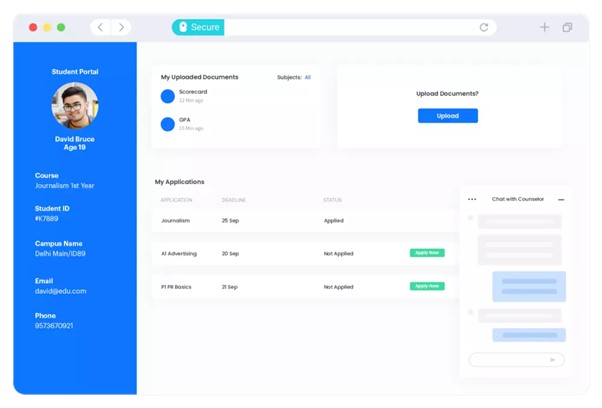
“You’re always looking at different ways to peel back the onion, right?” said Monica.
Explaining her approach, she said she looks at the different demographics and categories that they serve based on degree level and interest.
“Starting at the top and so trying to segment out the different types of students that ultimately we will be targeting and are speaking to and then drilling down to.”
Most of Monica’s organization’s education is focused on Master’s and Doctorate levels.
She pointed out how students from these fields were at different points in their career in their life.
Their admission strategy is to start at the degree level, and then based on where these students are in their ultimate goals and where they are in their careers, they start to segment out.
“We try and cast the widest net with the most impactful information to then help kind of narrow the funnel down to be able to get to the point to ultimately address the individual student needs.” Monica vividly explained.
This has allowed them to cater to unique student needs and ensure they have all the necessary tools and resources to support them with their long-term goals from a career and education perspective.
Loren, at this point, posed another poll question for the audience – “How many different types of audiences or personas, if you want to call them that, are you actively engaging?”
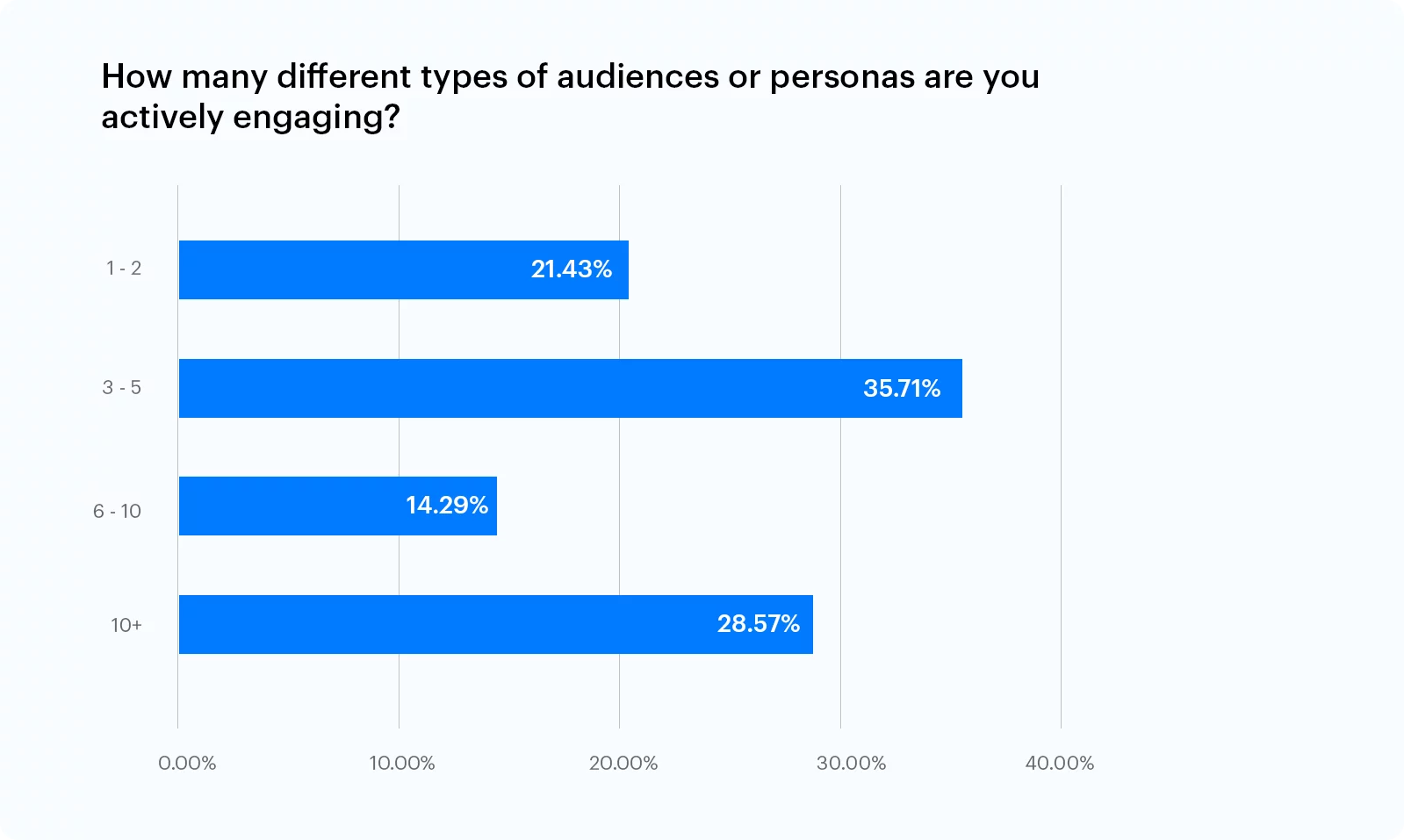
The answers that rolled in showed a fairly even distribution among one to two, three to five, and ten plus.
Continuing with her part, Loren deduced that “these new gen students, they’re coming back to school for a wide variety of reasons.”
A few possible reasons for that could be
- Students focusing on moving up in their career
- Being pushed by their employer to upskill to keep their job
- They’re ready or looking for a lifestyle change
However, on top of these reasons, the groups also have several concerns related to going back to school, such as
- The perceived value of education
- Child care issues that prevent them from continuing their education
- A general feeling of uncertainty about the economy and the evolving future of work, on a macro level
“Institutions really need to approach their audiences with a more sophisticated touch, to appeal to their aspirations while reducing these inhibitions,” stated Loren.
On being asked about the challenges on this front, Jon said that for them, there were, infact, two.
- Relocation, and
- Inflation
Talking further about these challenges, he said, “you’re gonna blame in 10 years in the future, all your friends have continued on, and you’re still making that, and it’s not really a job you love.”
A good way is to help them (the students) see the bigger picture and make it more affordable for them with housing clinics.
“Those are the two big things that we’re trying to work on right now,” he mentioned.
Monica Carson spoke up next about the time element being a necessary aspect and how it was impacting the population.
“The challenges that both of those industries (healthcare and education) have seen in the face with regards to just the added pressure in their in their day to day jobs, right and that doesn’t include what has surrounded them in their in their life as well.”
Many of her students belong to high-demand fields requiring much extra time.
Monica’s solution is to show these kinds of students how they can fit it into their schedule to take that next step.
Scheduling and building flexibility into the programs where possible allow the students to meet that next goal, whether it’d be for their career or their personal aspirations.
Meanwhile, the audience throws another question at the panelists. “How do you stay focused, cut down on the unnecessary work, and still do what’s needed to be authentic and aware?”
Monica’s answer to this was quick and simple, “It really comes down to collaboration and priority,” she said.
For her, creating a roadmap presentation for students, and for them, as an organization, has helped them hold themselves accountable for not going off course.
“That allows us to keep the focus and to also keep the spirit and the integrity of what we’re trying to do to meet our students, to ensure that they’re getting all the right necessary information and ultimately, their journey feels like it’s all integrated together,” said Monica.
Bobby added another interesting point to the ongoing topic.
According to him, the solution is to “bring the employer into the conversation.”
Bobby put forth that “the current situation with 11 million jobs, unfilled by 20 million jobs that are going to be transitioned in some way over the next decade employers are the ones that are in some cases hurting the most if they don’t close the skill gap and the employment gap.”
His answer to this problem was institutions that are successful at driving enrollments and continuing growth.
Some of Bobby’s suggestions were
- Institutions work with employers in the workforce to create programming that is best suited to fill those jobs.
- Upskill the incumbent workers, and
- Get new workers into the professions
“Designing programming that works for the jobs that are needed, I think, is sort of the way to solve this logjam between aspirations and innovations,” he noted.
Tailored Programs for Students
The next question posed by Lauren was, “how can we take these buckets and learn more about each group and target them based on what’s most important to them?”
To this, Bobby answered, “ what we found is really important is helping them understand how to discover their path and focusing on that.”
He immaculately explained that they try to think about what’s top of mind for the students and then tailor their programming, messaging, nurturing, and engagement efforts around those three macro common themes across the subgroups for better acquisition.
Jon also deduced how having a robust testing methodology and a testing culture is vital for any business, but certainly in education.
As the panelists were proceeding towards th end of their discussion, Loren summarized that “appealing to the next-gen of learners is highly dependent on your ability to communicate and advocate for this trifecta of student engagement.”
She gathers that the new majority of students have
- Increased need for ownership over their educational experience
- Control and ability to choose more variables than before, like the pace and their ability to blend online and offline
- A personalized experience that aligns with the need for agency and ownership
Monica then talks a little bit about ACE and how they have been able to promote success along the way by creating a community. Loren concludes the session with an overview of how LeadSquared, the sales, and marketing automation platform, excellently fits into the picture.
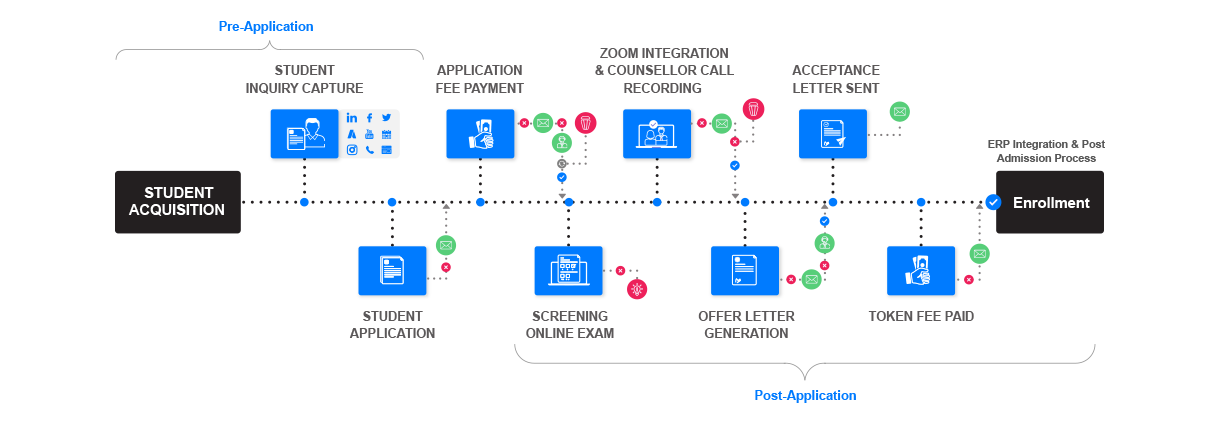
Ask us for a demo today to learn more about LeadSquared and get started on the journey to success.
Speakers
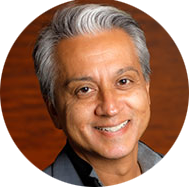
Bobby Babbrah
Managing Partner and CEO, Flipp.ed Ventures LLC
Bobby Babbrah is a software, education, and digital media executive with experience driving growth, innovation, and transformations for the education sector and SaaS companies. He serves as an active strategy advisor for LeadSquared. As managing partner of Flipp.ED Ventures, Bobby serves as an advisor, investor, and operating partner with private equity firms and Education sector portfolio companies.
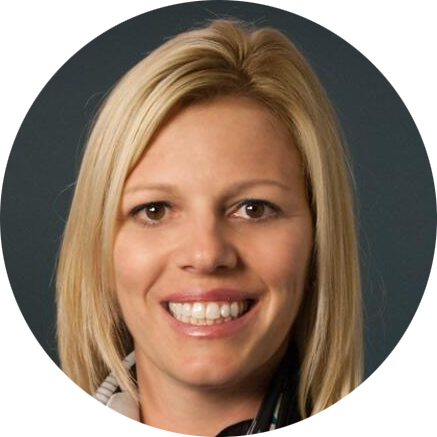
Monica Carson
Chief Growth Officer, American College of Education
Monica Carson oversees the functions related to partnership development and new student recruitment for ACE. Carson’s professional experience spans more than 20 years of service in enrollment operations for higher education. During her career, Carson has worked for the University of Phoenix, Grand Canyon University, Orbis Education, and Dream Center Education Holdings.
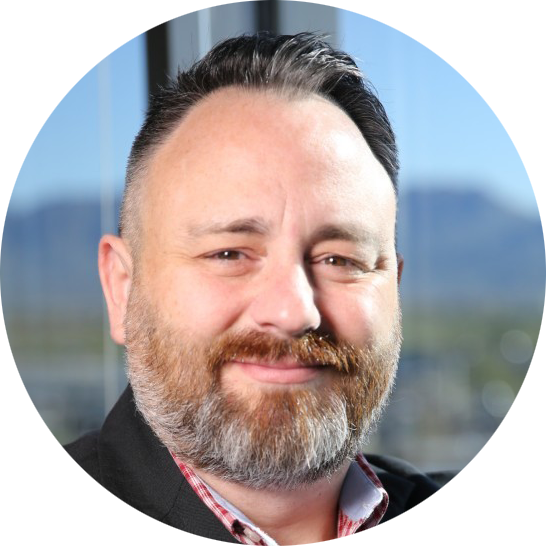
Jon Lewis
VP – Brand and Strategy, Universal Technical Institute
With 23 years of marketing experience, Jon Lewis currently serves as Vice President of Brand & Content Strategy where he leads a performance-driven internal advertising agency at Universal Technical Institute. He is also a published author with nine novels published by Little Brown, Scholastic, and Thomas Nelson. He has also written comic books for DC Comics and WildStorm.
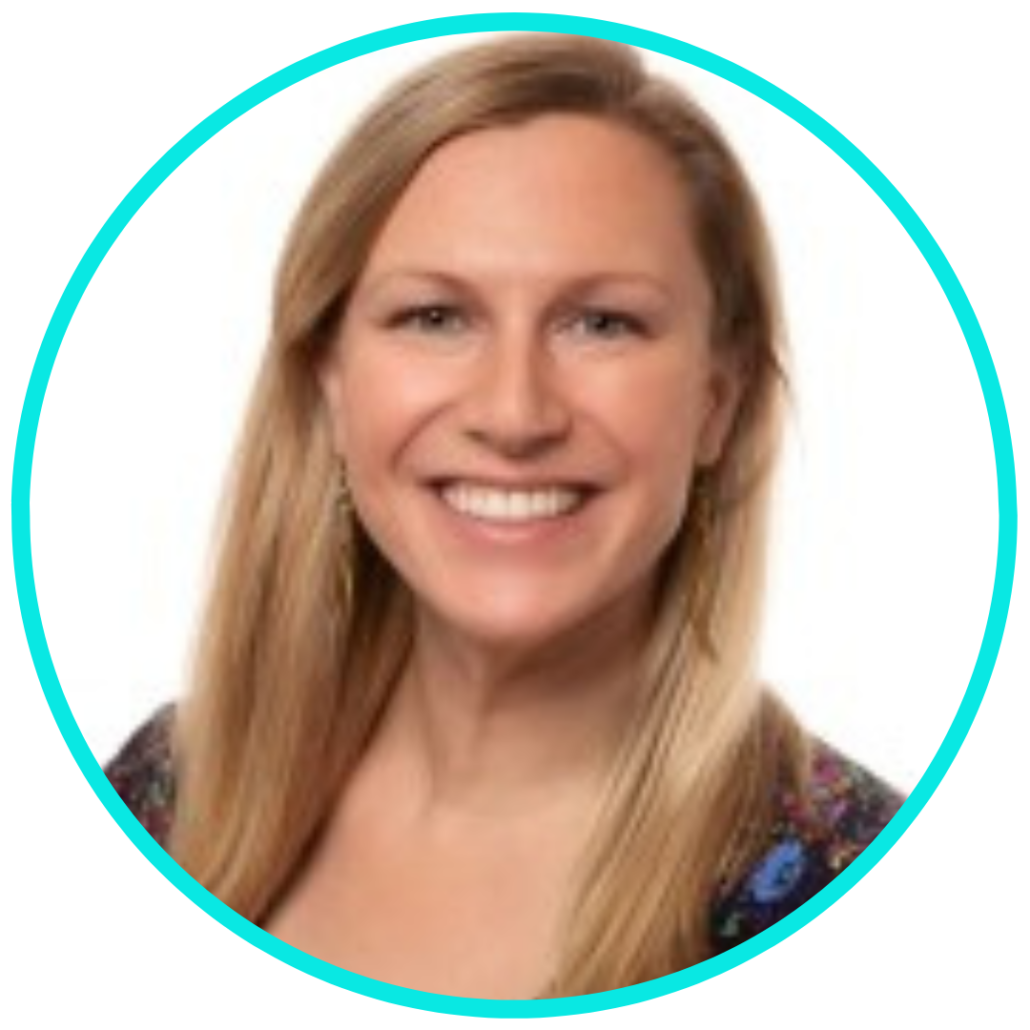
Loren Ellison
Key Accounts Manager, LeadSquared
Loren Ellison is the Key Accounts Executive for LeadSquared, Inc. She has a wide breadth of knowledge in Higher Education holding positions in Admissions, Student Success, Reporting and Analytics, and Strategic Planning over the past decade. She acts as a trusted advisor to customers by using her expertise to solve their business problems and achieve their organizational goals.





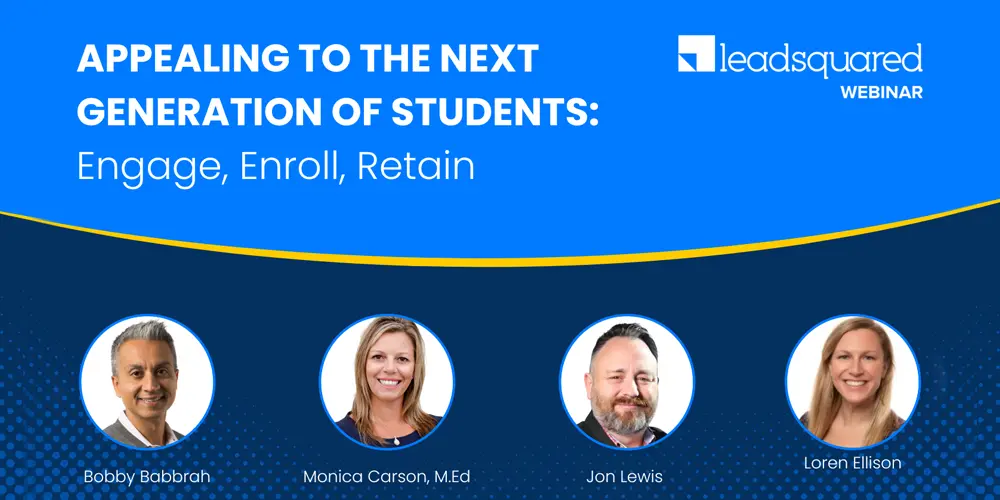


![[Webinar] The Vital Role of a CRM: Getting the most value as customer & marketplace demands intensify 10 The vital role of a crm](https://www.leadsquared.com/wp-content/uploads/2022/09/The-vital-role-of-a-crm-80x80.png)
![What is a Sales Pipeline? [7 Tips to Manage It] 11 sales-pipeline](https://www.leadsquared.com/wp-content/uploads/2022/09/sales-pipeline-80x80.jpg)